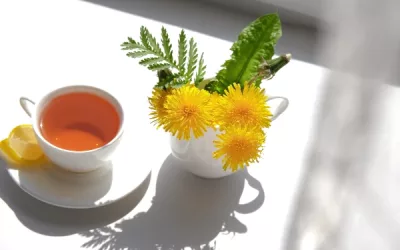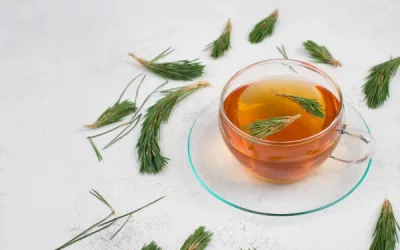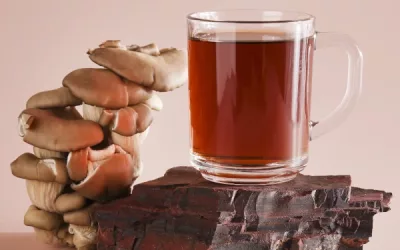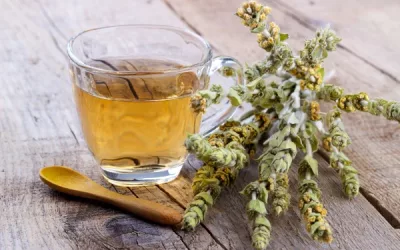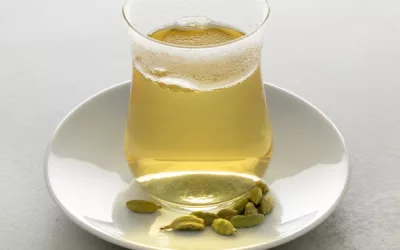Have you ever sipped a drink that does more than quench your thirst? Enter barley tea—a beloved beverage across East Asia that’s not just refreshing but packed with health benefits. In a world increasingly shifting towards mindful consumption, understanding barley tea is vital for health-conscious consumers and culinary enthusiasts alike. This article will explore its preparation, health perks, comparisons with other herbal teas, and even delve into where to find it. Let’s unlock the secrets of barley tea together!
Table of Content
- What is barley tea and how is it made?
- What are the health benefits of barley tea?
- How does barley tea compare to other herbal teas?
- Where can I buy barley tea?
- Can barley tea help with hydration?
- What is the best way to brew barley tea?
- Are there any side effects of drinking barley tea?
- How does the flavour of barley tea vary by region?
- Conclusion
What is barley tea and how is it made?
Barley tea, known as “bori-cha” in Korea, “mugi-cha” in Japan, and “dàmài-chá” in China, is an infusion made from roasted barley grains. This beverage is enjoyed for its nutty flavour, pleasant aroma, and numerous health benefits.
To make barley tea, the process begins with roasting barley grains until they become golden brown. This roasting gives the tea its distinct taste and fragrance. The roasted barley is then boiled in water, allowing the essence to infuse and create the tea. This drink is often served hot or cold, depending on the preference and the weather.
What are the key ingredients in barley tea?
Barley tea is pretty simple when it comes to ingredients. It mainly consists of:
- Roasted barley grains
- Water
- Optional sweeteners like honey or sugar
- Sometimes, additional herbs for flavour
You can even find pre-packaged barley tea bags in many grocery stores, which make the brewing process even simpler.
How does the preparation differ across cultures?
Barley tea is popular in several East Asian countries, and each has its own unique twist on preparation:
- Korea: In Korea, barley tea is often brewed in large batches and served chilled, especially during summer. Koreans might add a tiny pinch of salt for a slightly savoury taste.
- Japan: In Japan, barley tea is commonly served cold. It’s typical to find large pitchers of mugi-cha in Japanese households. They also have convenient tea bags for quick preparation.
- China: In China, barley tea is sometimes mixed with other grains like corn or rice for added flavour. It’s usually served hot, especially in traditional settings.
Despite these differences, the essence remains the same— a refreshing, caffeine-free beverage with a nutty flavour.
What are some common recipes for barley tea?
You can experiment with various barley tea recipes to suit your taste. Here are some popular ones:
- Classic Hot Barley Tea: Boil roasted barley in water for about 15-20 minutes. Strain and serve hot.
- Cold Brew Barley Tea: Place roasted barley in a pitcher of cold water. Refrigerate and let it steep overnight. Strain before serving.
- Sweetened Barley Tea: Prepare barley tea as usual. Add honey or sugar to taste while the tea is still hot, then chill if desired.
- Mixed Grain Tea: Combine roasted barley with other grains like rice or corn. Boil together and serve either hot or cold.
- Herbal Barley Tea: Add herbs like mint or lemon balm during brewing for extra flavour.
You can play around with these recipes to find the one that suits your palate.
In ancient China, barley was a staple grain, and it naturally found its way into their beverages. There’s an interesting story from the Tang Dynasty (618-907 AD) where Empress Wu Zetian was known to promote barley tea due to its health benefits. She believed it helped with digestion and overall wellness, and her court soon adopted the practice. This tradition has trickled down through generations, making barley tea a common household drink in China today.
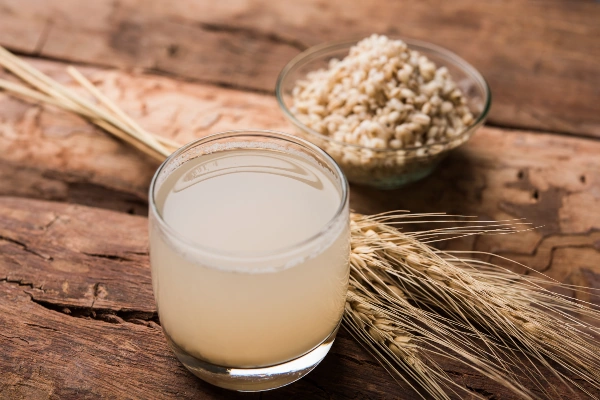
What are the health benefits of barley tea?
Barley tea, also known as “mugicha” in Japan or “bori-cha” in Korea, is a popular beverage in East Asia. It’s made from roasted barley grains and offers a range of health benefits that make it an attractive option for many people. Understanding these benefits can help you decide if it’s a good addition to your diet.
To make it easier, I’ve created a table summarising the various health benefits of barley tea along with scientific studies that support these benefits and any potential side effects. The table will help you quickly grasp the key points and understand how barley tea can contribute to your well-being.
Health benefits of barley tea
| Health Benefit | Research Findings | Side Effects |
|---|---|---|
| Improved Digestion | Studies show that barley tea can aid in digestion due to its fibre content, which promotes gut health. | Rare cases of bloating |
| Antioxidant Properties | Research indicates that barley tea contains antioxidants that help fight free radicals. | Generally safe |
| Better Blood Circulation | Findings suggest that barley tea can improve blood circulation, which is beneficial for heart health. | Minimal side effects |
| Weight Management | Studies have shown that barley tea can support weight loss by increasing metabolism. | None reported |
| Reduced Inflammation | Evidence supports that the anti-inflammatory properties in barley tea can reduce inflammation in the body. | Generally safe |
| Stress Relief | Research reveals that drinking barley tea can help lower stress levels due to its calming effects. | None reported |
| Enhanced Immune System | Some studies suggest barley tea boosts the immune system by providing essential nutrients. | Minimal side effects |
This table will help you quickly look at how barley tea can benefit you, backed by scientific research, and alert you to any possible side effects. It’s a handy way to see if barley tea is right for you.
How is barley tea prepared?
Barley tea has a unique, roasted flavour that can be quite refreshing. Preparing it is simple and can be done in a few steps.
- Roast the barley grains. You can buy pre-roasted barley or roast them yourself in a pan until golden brown.
- Boil water. Bring water to a boil in a pot or kettle.
- Add roasted barley. Place the roasted barley grains in a tea bag or directly into the boiling water.
- Steep the tea. Let the barley steep in boiling water for about 15-20 minutes, depending on your taste preference.
- Strain and serve. If you didn’t use a tea bag, strain the barley out before serving.
Barley tea can be served hot or cold, making it a versatile beverage for any season. Some people also add a bit of honey for sweetness or a slice of lemon for extra flavour.
What are the cultural significance and history of barley tea?
Barley tea holds a special place in East Asian cultures with a rich history that dates back centuries.
- Japan: Known as “mugicha,” it is often served cold during the summer months. It’s a staple in many Japanese households.
- Korea: Called “bori-cha,” it is commonly served both hot and cold and is even given to children as a healthy alternative to sugary drinks.
- China: Known as “dàmài chá,” barley tea has been used traditionally for its cooling properties, especially in the summer.
Barley tea has been integrated into daily life and culinary traditions across these countries, symbolising health and well-being. It’s often enjoyed during family meals, outdoor picnics, and even in tea ceremonies.
In the past, Japanese samurai would drink barley tea to stay hydrated and maintain their physical strength. It was believed to keep them calm and focused, enhancing their performance in battles. Korean farmers also drank barley tea in the fields to stay refreshed and energised during long working hours.
How does barley tea compare to other herbal teas?
Alright, so you want to know how barley tea stands up against the other fancy herbal teas out there? Get ready, because we’re diving into the world of caffeine content, flavour explosions, preparation rituals, health perks, and cultural vibes. Here we go.
Let’s start with what barley tea doesn’t have. Caffeine. That’s right. Unlike its caffeinated cousins, green tea and black tea, barley tea won’t have you bouncing off the walls at midnight. Herbal teas in general tend to be caffeine-free, and barley tea fits snugly into that category. So, if you’re looking to chill instead of getting jittery, this is your tea.
Moving on to preparation methods, barley tea keeps things simple. Grab some roasted barley grains, throw them in water, boil, and voilà! You’re done. No need for fancy strainers or timers. And yes, you can enjoy it both hot and cold – exactly how you want it. Similar to other herbal teas like chamomile or peppermint, it’s all about steeping, but with roasted ingredients. This little roasting escapade gives barley tea a unique flavour profile.
Speaking of flavours, ever sipped on a cup of smoky comfort? That’s barley tea for you – it’s nutty, toasty, and mildly sweet, something akin to walking through a roasted field of grains. Other herbal teas have their own fun guests: chamomile tastes like a hug from grandma, mint slaps you awake like a brisk morning breeze, and hibiscus smacks you with tart boldness. Barley tea is more of a relaxed, earthy chat.
Health benefits? Oh boy. Barley tea is like nature’s Gatorade – it’s great for digestion, loaded with antioxidants, and even aids in weight loss. It outshines some of the other herbal teas with its capability to improve blood sugar control and boost heart health. Yep, put down that energy drink and grab a cup of barley tea instead.
Culturally, barley tea is a staple in East Asia. Think of it as their version of our “getting cosy with a cup of hot cocoa” in both Korea and Japan. It’s everywhere – homes, restaurants, and vending machines. Meanwhile, chamomile’s the grandma of herbal teas in Western cultures, peppermint’s the lively youngster, and hibiscus struts like a diva in tropical regions.
What are the main differences in caffeine content?
Let’s dive straight into the caffeine gig – who’s got the buzz and who’s taking a nap. Believe it or not, barley tea is like your zen friend who’s always cool and calm.
- Barley tea: Zero, zilch, nada caffeine. Perfect for the sleep-deprived souls among us.
- Green tea: A fair kick with varying levels depending on the type.
- Black tea: The heavyweight with a stronger hit of caffeine.
- Chamomile tea: Naturally caffeine-free and more like a lullaby in a cup.
- Peppermint tea: Also caffeine-free; it’s the fresh but non-jittery kind.
You see, barley tea is your go-to for caffeine-free hydration. Great for evenings, children, or anyone who doesn’t want their heart racing like a hamster on a wheel.
How do the flavour profiles vary?
Okay, let’s get to the fun part: flavours. Imagine your taste buds being a video game avatar going through different flavour worlds.
- Barley tea: Earthy, toasty, and slightly nutty. Like a warm hug from Mother Nature.
- Chamomile tea: Gentle, flowery, and akin to sipping liquid sunshine.
- Peppermint tea: Bold, minty, and absolutely refreshing.
- Hibiscus tea: Tart and tangy, a delightful slap to your taste buds.
- Rooibos tea: Sweet, nutty, and full-bodied; like dessert in a cup without the guilt.
Barley tea’s roasted charm sets it apart in this flavour parade, making it the campfire storyteller among its floral and minty companions.
What unique health benefits does barley tea offer?
You’re probably wondering if barley tea is just another pretty face in the teapot. Spoiler: it’s got some serious game on the health front.
- Aids digestion – Goodbye, stomach woes.
- Packed with antioxidants – Like a mini superhero for your body.
- Promotes better blood sugar control – Wave goodbye to those sugar spikes.
- Hydrating and refreshing – Hydration for the win!
- Supports heart health – Keeps your ticker in top shape.
These benefits make barley tea a standout, giving herbal teas a run for their money with its unique health perks.
Now, here’s a delightful snippet from history. In ancient Korea, barley tea (or “boricha”) was more than just a drink; it was believed to keep malevolent spirits at bay. Families would leave pots of barley tea at house entryways as a symbol of good luck and protection. Go ahead, sip on this history with your herbal, caffeine-free goodness. Cheers!
Where can I buy barley tea?
If you’re keen to add a refreshing and caffeine-free beverage to your diet, barley tea is a fantastic option. But where to get your hands on this gem? No need to scale the Himalayas. You have various stocked places to score some barley tea.
You can find barley tea in numerous stores and websites, making your quest a breeze.
What are the best online retailers for barley tea?
Alright, you lazy couch potato (I say that with love), let’s talk online. The world of e-commerce has made it ridiculously easy to get barley tea delivered right to your doorstep.
- Amazon: The godfather of online shopping. Whether you’re looking for traditional roasted barley tea or fancy blends, you’ll find endless options. Customer reviews are your best friend here.
- iHerb: Perfect for health-conscious shoppers. Often stocks various Asian brands of barley tea, with detailed product info and reviews.
- Asian Food Grocer: Specialises in Asian groceries, making it a killer spot for authentic barley tea brands straight from the source.
- TeaVivre: For the tea snobs among us, this site offers high-quality varieties and comprehensive descriptions.
- Etsy: You can even find homemade and artisanal barley tea blends. Be prepared to pay a bit more for those bespoke vibes.
Are there any recommended brands?
Look, not all barley tea is created equal. There are some standout brands that you should keep an eye on.
- ITO EN: Widely respected and easily available. Japanese quality, reliable taste.
- Nongshim: A Korean favourite. Known for a robust, nutty flavour.
- Dongsuh: Another solid Korean brand. Often comes in large packs, proving size does matter.
- Yamamotoyama: Blends decades of Japanese tea-making expertise into every bag.
- Den’s Tea: A bit niche but highly praised for quality and authenticity.
Pick one, any one—they all bring the magic of barley to your tea cup.
How can I make barley tea at home?
Feeling industrious? Make barley tea right in your kitchen. It’s simpler than you might think, and making it yourself ensures that you know exactly what you’re sipping on.
- Buy some barley: You can grab pearled or hulled barley from almost any local grocery store or health food shop.
- Roast it: Toss the barley into a pan and roast them until they’re a nice golden brown and aromatic.
- Boil water: This shouldn’t be a surprise. Boil a good amount of water.
- Steep the barley: Add your roasted barley to the boiling water. Let it boil for about 15-20 minutes. The longer, the stronger the flavour.
- Strain and serve: Just like you would with any loose leaf tea. Sip hot or chill it for a refreshing cold brew.
It’s straightforward and gives you maximum bragging rights.
Fun fact to leave you sipping: In medieval Europe, barley beverages were a staple. People drank “barley water” as a health tonic, much like how we see barley tea today. Even the Knights of the Round Table probably had their health-conscious moments, sipping barley infusions between quests. So, every time you enjoy a cup, you’re basically channelling your inner knight. How’s that for a cool connection?
Can barley tea help with hydration?
Alright, time to dive into the world of barley tea. If you’re on the hunt for a drink that’ll keep you hydrated without sending you bouncing off the walls (we’re looking at you, caffeine!), then let’s see how barley tea can help with hydration. Spoiler alert: it’s pretty awesome.
Barley tea is primarily water, which, not surprisingly, is quite essential for hydration. Unlike some other drinks that wave fancy labels at you but sneak in sly diuretic effects (thanks again, caffeine), barley tea’s got your back. It doesn’t mess with your body’s hydration levels or make unexpected dashes to the loo necessary. And let’s not forget the benefits of hydration are more than just quenching thirst. We’re talking skin that won’t crack like the Sahara, organs functioning smoothly, and your energy levels staying up like a kite in the wind.
How does barley tea contribute to daily hydration?
Here’s the skinny: barley tea is like that friend who doesn’t bring drama to your life.
- It’s mostly water, which is the MVP of hydration.
- It’s caffeine-free, sparing you from unwanted diuretic effects.
- It’s versatile; you can drink it hot or cold, adapting to whatever mood Mother Nature’s in.
- Loaded with antioxidants, because who says hydration can’t come with a side of health benefits?
- Its soothing taste means you’re likely to finish the cup, unlike that bottle of dust-collecting cucumber-infused water.
Instead of just sipping on plain water till you feel like a fish, you can mix things up with barley tea. It ensures you drink enough fluids and doesn’t give you any reasons not to.
Is barley tea more hydrating than water?
Let’s set the record straight on this one. Water is the hydration heavyweight champion of the world. Ask any health guru, and that’s the answer you’ll get. But barley tea isn’t far behind, stepping into the ring with some nifty tricks.
- Barley tea is 99% water, so you’re essentially drinking water with benefits.
- The absence of caffeine means there’s no sneaky dehydration happening.
- Electrolytes are present in barley tea, which is a bonus, helping your body absorb and retain water more effectively.
- Compared to sugary drinks, it’s like a hydration angel as it doesn’t leach water out of your cells.
While it’s not likely to overshadow water, barley tea definitely gives you a more nuanced and flavourful hydration experience.
What is the recommended intake for optimal hydration?
When it comes to optimal hydration, there’s no one-size-fits-all, but here are some ballpark figures:
- Aim for 2 to 3 litres of fluid per day. This includes all fluids, not just water.
- Barley tea can easily fit into this target, providing a tasty and effective hydration source.
- Drinking a warm cup in the morning can kickstart your hydration game.
- Carrying a chilled bottle on a hot day can keep dehydration at bay.
- About 4 to 6 cups a day of barley tea is a good place to start without overdoing it.
Remember, though, that everyone’s hydration needs can differ based on factors like activity level, diet, and climate.
Let’s round off with a pretty neat bit from history. During the Korean War, barley tea was a daily staple for soldiers trying to stay hydrated and cool in the humid climate. They’d brew batches of this tea, finding it made a refreshing source of hydration and had a calming effect amidst the chaos. So, not only are you sipping on something beneficial, but you’re also connecting with bits of history.
There you go, folks! Barley tea isn’t just a drink; it’s pretty much a hydrating, caffeinating alternative with a side of historical awesome.
What is the best way to brew barley tea?
Alright, potential barley tea connoisseur, let’s talk about the best way to brew this delightful and caffeine-free elixir. There are a few key aspects to nailing the perfect cup: water temperature, steeping time, and the right equipment. Get these right and you’ll be sipping a harmonious brew that tastes just as it’s meant to.
Brewing barley tea, or mugicha as it’s called in Japan, is an art form. Picture yourself gently warming water to the right temperature, steeping those roasted barley grains just long enough, and using the best tools for the job. It’s a bit like dating – you don’t want to come on too hot or stick around too long. When done right, your barley tea will be smooth, nutty, and thoroughly refreshing.
What is the ideal water temperature for brewing?
Now, let’s get into specifics so you don’t mess this up and end up with barley-flavoured dishwater. When brewing barley tea, the water temperature plays a crucial role. We’re aiming for a sweet spot here; too hot and you’ll scorch the barley, too cold and it’s flavoured water at best.
- Optimal temperature: Use water that’s heated to 100°C – that’s your rolling boil.
- Temperature control: A kettle with temperature settings makes life easier but don’t worry, boiling water on the hob will do just fine.
- Why it matters: Hitting that boiling point ensures the barley extracts properly, releasing those toasty, slightly smoky notes we love.
A kettle that lets you control the temperature or even an old-school stovetop kettle works great. Just make sure it hits that rolling boil, darling.
How long should barley tea be steeped?
Steeping time can make or break your barley tea. You want all those delicious roasted, nutty notes without bitterness. Steep too long, and you’re in for a bitter brew that you’ll regret.
- Steeping range: Aim for 15-20 minutes; this hits the sweet spot between flavourful and bitter-free.
- Cold brewing: Want to get fancy? Cold brew it by letting it steep in the fridge for 4-6 hours.
- Avoid over-steeping: Stick to the time; otherwise, you’ll need to work on your poker face when you serve it.
Resist the urge to steep it ‘just a bit longer,’ and if you’re adventurous, try cold brewing. It’s a bit like a summer holiday for your taste buds.
What equipment is best for brewing barley tea?
Look, you don’t need a high-tech laboratory to brew barley tea, but having the right equipment can make things easy and pleasant.
- Tea kettle: Essential, obviously. Go for one with temperature control if possible.
- Steeping bags: If loose grains irritate you, large tea bags or a tea infuser work wonders.
- Pot: Happens to be perfect for larger quantities and ideal for cold brewing.
- Strainer: If you’re going the rustic route with loose grains, a fine-mesh strainer is your buddy.
Get your quality roasted barley grains from an Asian grocery store or online, grab your kettle, and get brewing. The key is simplicity, just like the tea itself.
In the world of tea, few drinks hold historical significance like China’s Tang Dynasty’s embrace of barley tea. Monk Kukai, after studying in China, introduced it to Japan. The monks not only adored its taste but believed it enhanced meditation by providing a clear yet calm mind. So next time you sip on your perfectly brewed barley tea, know you’re enjoying a beverage with a serene legacy stretching back to the 8th century. Cheers!
Are there any side effects of drinking barley tea?
Alright, let’s break it down. Barley tea – that nutty, aromatic brew championed in East Asian cuisines – isn’t just a delicious replacement for your daily caffeine fix. However, like any superstar, it comes with its own set of quirks and potential side effects. It’s time to unravel those!
Barley tea is generally recognised as safe, but let’s dive into the nitty-gritty of potential hazards. First, there’s the allergic reactions. If you’re allergic to cereal grains, heads up! This one’s not for you. Next up, medication interactions. Yep, just like with your ordinary chamomile or peppermint tea, barley tea can tango with medications in unexpected ways. And last but not least, how much is too much? Spoiler alert: moderation is still key. Let’s get into the details.
What are the common side effects of barley tea?
Now, you might be thinking: “But it’s just tea, right?” Well, even the mild-mannered barley tea can have its diva moments.
- Allergic reactions: If you’ve got a known allergy to cereals like wheat, rye, or – you guessed it – barley, stay clear. Common symptoms include everything from itchy skin to severe anaphylaxis.
- Digestive issues: Overindulging can lead to bloating, gas, or other digestive discomforts. Your gut might not be your biggest fan if you guzzle too much.
- Blood sugar levels: Barley has a knack for regulating blood sugar, which is great unless you’re taking diabetes medication. It might intensify the effects.
- Blood thinning: Barley contains certain properties that could interact with anticoagulants, making you more prone to bleeding.
- Bloating: Due to the higher fibre content, you might experience a bit of bloating and gas.
Beware of tiny red flags your body waves. If it protests, listen to it!
Who should avoid drinking barley tea?
Though barley tea is generally a friendly beverage, some people should steer clear.
- Individuals with cereal allergies: If you’re allergic to barley, wheat, or similar grains, give barley tea a wide berth. Your immune system won’t send you a thank-you note.
- Diabetics: Those managing diabetes with medication should consult a healthcare professional before sipping on barley tea. It can mess with your blood sugar control.
- Expectant mothers: There’s not enough research on its effects during pregnancy, so it’s better to be safe than sorry and avoid it.
- People on blood thinners: Those taking anticoagulant medication should avoid barley tea due to its potential blood-thinning effects.
- IBD sufferers: If you have a history of inflammatory bowel disease (IBD), this might not be the tea for your already touchy digestive system.
Basically, if you tick any of these boxes, it’s time to find a different brew!
How much barley tea is safe to consume daily?
So, you’re not allergic, diabetic, pregnant, or on blood thinners? Great! Here’s how you can enjoy barley tea responsibly.
- Moderation is key: Like with everything else in life, less is more. Stick to 2-3 cups a day to reap the benefits without poking the bear.
- Consult your doctor: Especially if you’re taking medications, it wouldn’t hurt to get professional advice on how much is too much.
- Stay hydrated: Remember, tea isn’t a substitute for plain ol’ water. Balance it out with sufficient hydration.
- Listen to your body: Feeling bloated or uncomfortable? It might be a sign to cut back.
- Quality matters: Opt for organic, good-quality barley tea to avoid toxins and pesticides which could cause more harm than good.
Control your intake, and you’re golden.
Speaking of barley tea, how about a historical titbit? In ancient China, barley was not just a culinary staple but also revered for its healing properties. Emperors during the Tang dynasty declared it a medicinal wonder, using it to treat digestive disorders and enhance vitality. Perhaps Emperor Xuanzong himself enjoyed a cup before penning another poetic decree! Whether you love it for its taste or its history, remember that even emperors knew the value of moderation. Stay mindful and enjoy your brew!
How does the flavour of barley tea vary by region?
Barley tea isn’t just barley tea. Depending on where you sip it, the experience can be quite different thanks to traditional recipes, local ingredients, preparation methods, and serving styles. So, grab your imaginary passport, and let’s explore how barley tea’s flavour changes depending on the region.
Barley tea is popular across East Asia, particularly in Korea and Japan. Each country has its own twist on this nutty, roasted beverage. The differences can be quite fascinating and surprisingly significant. It’s not just about the barley itself; it’s about how it’s prepared, brewed, and served.
What are the flavour differences between Korean and Japanese barley tea?
Japanese barley tea, known as “mugicha,” typically has a subtle, earthy taste. It’s lighter and often enjoyed cold, especially in summer, offering a refreshing break from the heat. On the other hand, Korean barley tea, or “bori-cha,” packs a stronger, more robust flavour. Koreans often brew it until it’s a rich, deep brown, giving it a roasty kick that’s almost akin to coffee.
- Roasting Methods:
- In Japan, barley is barely roasted for a delicate taste.
- Korea roasts barley longer for a darker, bolder flavour.
- Brewing Times:
- Japanese barley tea has a short brewing time, around 5-10 minutes.
- Koreans brew it longer, sometimes over 30 minutes.
- Temperature:
- Mugicha is often served chilled.
- Bori-cha is usually enjoyed hot but can be had cold too.
- Serving Occasions:
- Mugicha pops up frequently during summer picnics.
- Bori-cha is a staple in Korean households, served daily.
Each sip carries a touch of the culture it’s brewed in, so whether you’re in Tokyo or Seoul, the barley tea in your cup tells a different story.
How do local ingredients affect the taste?
Local ingredients lend their unique characteristics to barley tea, enhancing its flavour profile. In regions where high-quality barley thrives, the tea usually tastes more aromatic and rich. The surrounding flora also plays a role. For instance, in some parts of Japan, barley might be grown near fields of wildflowers, granting the tea a delicate floral undertone.
- Barley Quality:
- Higher quality barley equals more flavourful tea.
- Water Source:
- Mineral-rich water can add subtle notes to the tea.
- Climate:
- Regions with a temperate climate yield barley with nuanced flavours.
- Local Additions:
- Sometimes, local herbs or even a pinch of salt can find their way into the brew.
- Soil:
- Fertile soil can enhance the barley’s natural sweetness.
These ingredients don’t just affect the taste; they connect the tea to its land of origin, making each cup a tiny geography lesson. Your palate can tell whether it’s from a lush valley or a sun-soaked plain.
What are some unique regional serving styles?
Another exciting part of barley tea’s journey is how it’s served. Serving styles can vary dramatically, from simple cup-to-mouth rituals to more elaborate pouring ceremonies.
- Japanese Style:
- Often served chilled in clear glasses.
- Sometimes paired with summer sweets like mochi.
- Korean Style:
- Typically served in ceramic cups.
- Often accompanied by meals as a digestive aid.
- Chinese Variations:
- May include infusions of other grains.
- Served hot in ornate teapots.
- Taiwanese Twist:
- Includes sweeteners like honey.
- Popular in bubble tea shops as a cold beverage.
Every serving style brings a different ambiance to the drinking experience, making it more than just a tea—it’s a cultural ritual.
Once upon a time in ancient Korea, a general named Eulji Mundeok was preparing for an imminent battle during the Goguryeo-Sui War. To keep their spirits up, he served his soldiers barley tea every morning. The robust, rich flavour fortified them against the harsh conditions. Legend has it that this simple drink not only kept their bodies strong but also brought a sense of unity among the troops. It’s a testament to how something as humble as barley tea can have a profound impact, even in the throes of war. So next time you sip on bori-cha, remember you’re drinking something historical.
Conclusion
As I reflect on the journey through barley tea, it becomes clear that this humble beverage is so much more than just a drink to quench thirst. By delving into its rich preparation methods and cultural significance, we’ve uncovered how different regions have embraced and adapted barley tea, creating an enchanting tapestry of flavour and tradition. The health benefits this tea offers, as laid out in the informative table, reveal the potential for improved well-being, which many may find appealing, especially in a world increasingly leaning towards natural, herbal remedies.
The comparison with other herbal teas highlights barley tea’s unique profile—low caffeine, distinctive flavour characteristics, and specific health advantages that set it apart, all while inviting health-conscious consumers to explore alternatives to traditional options. Furthermore, understanding where to obtain this beverage, from local shops to online retailers, empowers enthusiasts to easily incorporate barley tea into their daily lives.
In our discussions around hydration, the importance of barley tea becomes even more pronounced. It acts not just as a tasty beverage but as a viable addition to our hydration routine, especially when one considers its water content and the benefits derived from adequate hydration. Additionally, the optimal brewing methods we covered ensure that anyone, regardless of experience, can enjoy a perfect cup.
While barley tea holds much promise, it is important to remain vigilant about potential side effects and understand who should exercise caution. This balances the joy of consumption with the responsibility of informed decision-making.
As I conclude, I am left pondering: Can a simple drink like barley tea encapsulate so much history, health benefits, and community? I believe it can, and it does. Embracing barley tea could just be the beginning of a journey toward revitalised health and cultural exploration. So, next time you reach for a beverage, consider this ancient elixir—it may very well transform your routine into something refreshingly enriching. What will your next cup reveal about the world?


